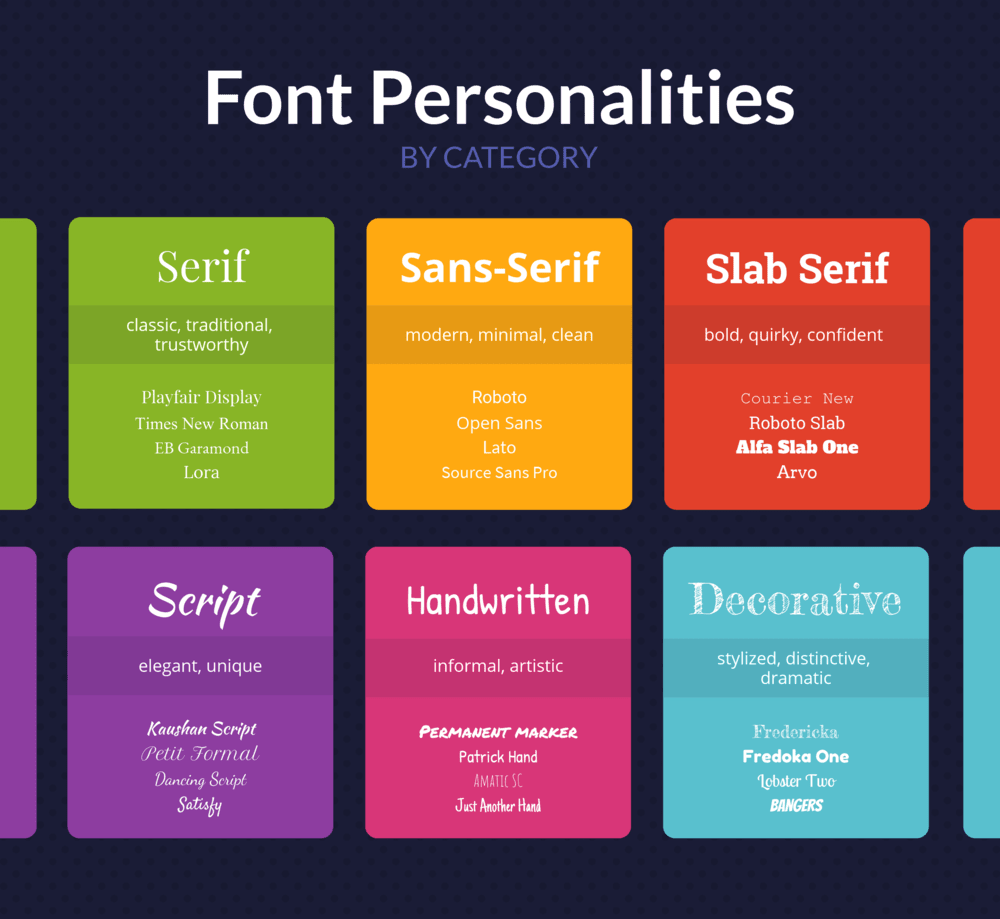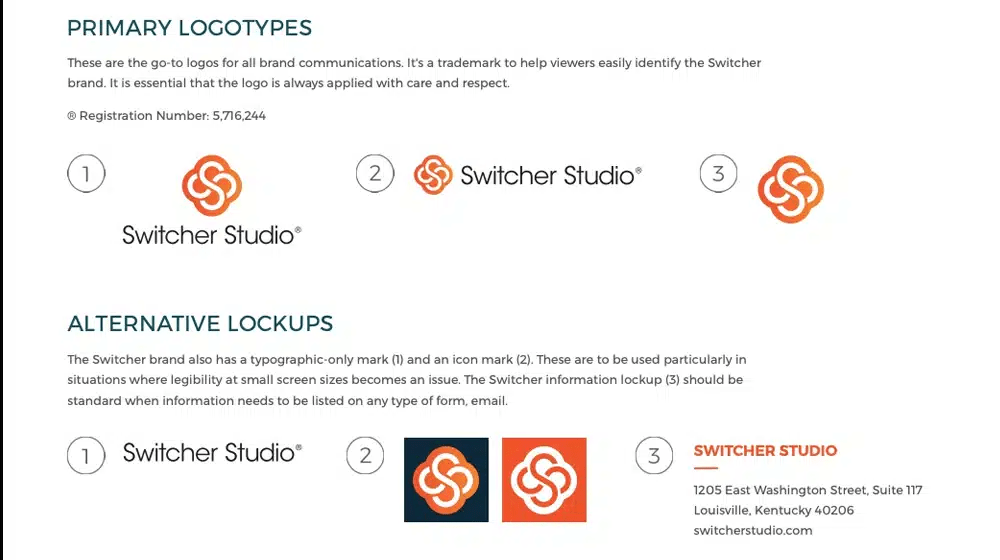Nike sells shoes and other sports apparel. But its brand stands for more than that. When consumers think about Nike, concepts like health, sports, and a physically active lifestyle come to mind.
Nike’s brand doesn’t scream appearance or luxury. Instead, it focuses on performance, strength, and stamina. That’s the brand image it conveys.
What is your identity as a business or brand? What comes to mind when people think about your company? If you don’t have the answer, you better find one.
I know. You can’t come up with a winning brand identity and strategy overnight. You’ll need to do some hard thinking. That’s where these branding questions I am about to cover will come in handy. Let’s dig in!
Disclaimer: If you buy any products through links on this site, I may earn a commission. But it doesn't make any difference to your cost, and it helps me keep this blog running. So you could always read my articles for free.
Branding questionnaire for businesses and agencies
This branding questionnaire is designed to delve into various aspects of your brand, from its values and personality to its target audience and competition.
By answering these branding questions with detailed insights, you’ll be able to craft a tailored branding strategy that resonates with your audience and effectively communicates your unique identity.
What’s the focus of your brand?
What do you do? The conversation about branding begins with what your business does. What do you sell? How do you earn revenue? What value do you provide to users? Do you make a physical product, resell digital products, or offer a service? Why does your business exist?

Tesla, for example, represents itself as an innovative organization dedicated to saving the environment and revolutionizing how we commute from one place to another. So its visual look and feel are positioned to convey this notion.
What’s your product offering?
Similar to the question above, you have to consider your product. How does your product or service work and help customers? Do you have one or many products and services? Are they used together or in isolation? How do they come together to solve your prospects’ problems?
What’s your value proposition?
What problems is your company solving? What benefits do your products and services provide to users? Your unique value proposition is a crucial aspect of your branding.
A unique selling proposition is a compact summary of the benefits that a brand provides to its buyers. It acts as a concise declaration of your purpose.
Take Burger King, for example. What problem is the brand solving? It’s basically serving people who want access to fast and affordable food. Although hundreds of companies are solving the same problem and giving competition to Burger King, its brand equity helps set it apart and keeps it on a growth trajectory.
So how can you create a value proposition? Start by recognizing your customers’ core problem. Then note the benefits your product delivers, and find a way to present these benefits in a succinct way while making them more valuable in the eyes of your target audience.
What’s different about your brand?
There’s no business without competitors. So it’s imperative that you stand out in the marketplace.
One of the most common threads in the branding statements and strategies that fail is that they fail to acknowledge their competitors, let alone make an effort to differentiate.
Far too many companies think that if they don’t talk about their competitors, the buyers won’t know about them. But in the current information age, that’s impossible.
Avoiding the discussion about competitors and how you are different from them only does one thing. And that is showing your company’s lack of confidence and competence in delivering what you promise.
There is no shortage of ways in which you can demonstrate what sets you apart from your customers. You’re limited only by your own creativity and imagination.
Here’s an example. Hundreds of brands are competing to grab a share of the prescription lenses and glasses market. Yet Warby Parker has managed to build a name for itself in this highly competitive space. And that’s because they have made themselves stand out in a number of ways.
The company has a unique voice and visual branding. It helps customers by delivering valuable information in a friendly and accessible language.

Plus, it shines due to its laser focus on convenience. Customers can use its tools and guides to buy their ideal glasses online. Not just that. They can also take advantage of the company’s “home try-on” program. This program lets them try on and test the company’s products in person.
What defines your brand personality?
Think of your brand as a person. What kind of person is it? For example, are you laid-back and goofy, or serious and direct? Are you traditional and conventional, or progressive and rebellious? Whatever you are, that’s your brand personality.
Brand personality simply means a collection of human traits that can be associated with your brand. Here are some of the most commonly used brand personalities leveraged by companies and the characteristics associated with them.
- Sincere: Considerate, kind, family-oriented, environment-friendly, cares about people and communities
- Rugged: Tough, survivor, rough, outdoorsy, persistent, athletic, and physically powerful
- Excited: Playful, carefree, energetic, young, trendy, and modern
- Competent: Effective, accomplished, high-achiever, and influential leader
- Sophisticated: Exclusive, elegant, charismatic, prestigious, and luxurious
To generate a brand personality, you need to understand how customers see you, and how you want them to see you. If there’s a mismatch between them, you’ll need to adjust your branding and marketing approach to close the gap.
What’s your voice and tone?
Your brand personality is a combination of how your brand looks and how it sounds. And how your brand speaks is its brand voice. This voice needs to be consistent in all your communications. That’s why you need a definitive writing style.
Take Uber, for example. Uber’s brand voice is thoughtful, confident, simple, and consistent.
Head over to its brand voice guidelines and you’ll see many samples of its consistent copywriting.

- Thoughtful means that Uber’s communication puts the users first
- Confident and simple because the way Uber writes is easy to understand and direct.
- Consistency refers to unifying the experience across all the channels, materials, and locations. So no matter what, when, and where the company communicates, it sounds the same.
Overall, Uber’s voice reflects the core of its brand personality, indicating what Uber is and what it stands for.
Who is your target audience?
Unless you’re a global brand like Coca Cola that can just chalk up its target audience as anyone who feels thirsty, you’re probably targeting a specific audience.
So you need to be clear on the people you want to target with your branding. Who are you trying to reach with your marketing message?
Finding the answer to this question boils down to creating a customer persona, which can have several aspects:
- Goals
- Demographics
- Motivations
- Problems
- How and where do they consume information?
- Who do they trust?
But you should know that a persona can’t help you if it’s not specific enough. Just defining your target audience as “gamers” or “baby boomers” is not going to cut it. That’s too broad. You’ll need to drill down deeper. Here’s an example:
- Men
- 30-40 years old
- Located in Boston
- Hold a master’s degree
- Annual income of $60,000 and up
- Passionate about their appearance and fitness
What are your brand’s core values?
Brand values are the fundamental beliefs that a business stands for. These beliefs serve as principles that guide the brand’s behavior and actions, like protecting the environment, fostering inclusiveness, and encouraging transparency.

As you think about your branding, look within and identify your core values. Then consider how you will communicate those values through your branding. Here are some techniques you can use to identify your brand values.
Brainstorm: Huddle with your team and discuss what your brand stands for. What core standards and behavior would you want your business to align with?
Survey your audience: There might be some pre-existing ideas or themes that the audience in your industry already relates to. Make an effort to understand and articulate these concepts.
Look at your competition: What brand values do you see coming up again and again when you analyze similar businesses? Do they even have brand values? And are those values good enough for modern times and audience needs? What would you change?
Which similar brands do you admire?
We’re exposed to thousands of brands every year. And somewhere down the road, you must have come across brands that resonated with you. So think about the brands, their identities, and the messaging that inspired you. And figure out the lessons you can learn from them to fuel your own success.
A word of warning, though. The brands you choose should be the brands you admire for their character, and not for how successful they are. For example, you can get inspired by the success of Apple because of the company’s profits and valuation.
But that doesn’t give you anything to learn from and use in your own business. Instead, you should be inspired by their focus on innovation, thinking out of the box, and customer service.
So how can you identify your competitors or other brands to emulate? The obvious step is to start with Google and other search engines. Search for your main keywords or brand name and see what other companies come up in search results. And don’t forget to check the ‘People also search’ section.
Another way is to use social media. Search relevant hashtags, follow influencer accounts, and stay updated on popular posts related to your industry.
What’s your brand’s story?
The origin story of your business is a powerful component of your brand identity. But only if you know and hone that story. For example:
- Did your founder launch the business from their garage with a loan provided by a family member?
- Do you have any case studies and customer success stories showing tremendous promise?
- Did you encounter and overcome any struggles to succeed in the face of intense adversity?
- Did you earn your experience in one industry and apply the lessons you learned to bring an innovative solution to another industry?
Any of these could be valid grounds for shaping your brand story. The only essential requirement is that your story should have an obstacle or conflict.
Adversity is the key to creating compelling narratives. So you need to be honest about the setbacks your business has faced and own them. The more transparent you are about your flaws, the more your audience will feel connected to your brand.
For example, hundreds of companies manufacture apparel for consumers to buy year after year. People keep buying new clothes and discarding old ones. This leads to an increase in clothing waste and damages the environment.
This is the challenge that Patagonia solves as part of its brand story. Patagonia’s Worn Wear program takes used Patagonia products and recycles them to an almost-new level. These products are then sold at discounted rates.
This approach doesn’t just save clothing waste from joining landfills, but also provides high-quality clothing to the needy.
What’s your chosen typography?
Fonts impact how people perceive your brand. So choosing the right typefaces based on your personality and values is important for effective branding. Different classes of fonts have different meanings attached to them.

Serif: These fonts are classic and reliable. They are meant for brands that represent a healthy respect for traditions. For example:
- Garamond
- Times New Roman
- Palatino
- Bodoni
Sans-serif: These fonts are clear and direct, and are used by brands that want to evoke a sense of modernity and minimalism. For example:
- Helvetica
- Droid Sans
- Verdana
- Futura
Script: Script fonts are special and unique. For brands, they convey a feeling of elegance and distinctiveness. For example:
- Pacifico
- Allura
- Alex Brush
- Windsong
Handwritten: These informal fonts are crafty and fun. And the brands that choose these fonts look more approachable and playful. For example:
- Balqis
- Porcelain Sans Serif
- Salima
- Herbarium
Decorative: Decorative fonts are easiest to remember. And they make a brand look stylish, dramatic, and diverse. For example:
- Blueshift
- Authentica
- Boho
- Boucherie
Slab serif: If you’re looking for something bold and confident, then you’ll like slab serif fonts. These are best suited for brands with a proven traffic record of quality of performance.
- Avant Garde
- PT Sans Pro
- Dejavu Pro
- Arial
So when choosing your fonts, make sure they convey the concepts that you want to be connected to your brand.
What’s your brand’s color scheme?
Similar to typography, your color selection influences your brand’s perception in the minds of consumers. At a basic level, the most commonly used colors stand for the following meanings:
- Green: Organic, environment, growth, money, happiness
- White: Purity, calmness, peace, cleanliness
- Blue: Reliability, trust, loyalty, integrity
- Yellow: Cheerfulness, originality, creativity
- Purple: Sophistication, luxury, elegance, royalty
- Red: Danger, passion, strength, excitement
For example, the TV network Nickelodeon primarily uses the color orange to convey a bold, childlike, and bright persona. This makes sense since its target audience is children.
Everything from the brand’s logo and website to social media messages gives a sense of creativity and youthful adventure through the signature orange color.
When choosing your brand colors, the idea is to determine a set of primary colors that will be used the most, secondary colors for accents, and tertiary colors for subtle elements.
How does your logo align with your brand?
A logo is one of the most prominent components of your brand identity. Naturally, a great logo should have a strong justification to back it up as the face of your brand.
Amazon’s logo, for example, is a symbol that conveys multiple meanings. It includes a smiley face in the shape of an arrow, which indicates how happy they make their customers. Plus, the arrow goes from the letter A to the letter Z, indicating the company’s vast catalog of products.
So when making decisions about your branding, it’s important to zero in on your brand’s logo and the rules about its usage. For example, what colors can be used for the logo? How much space should be there around the logo? And so on.
If you take a look at Switcher Studio’s brand kit, for example, you’ll see detailed instructions about what can and can’t be done with their logo.

This is important because you’re not the only one who’ll use your logo. It’ll also be used by customers, partners, influencers, journalists, and others when discussing any piece of information about your business. And if people end up using your logo wrong, it’ll reflect poorly on you.
What’s your brand’s long-term goal?
Think about the future. What is your mission and vision? How are you going to take your industry forward? Your brand’s mission statement highlights the goals of your brand, which tie in with your brand identity.
Depending on your business, your brand goals can be practical and realistic, or they can be more inspiring and out of the world. For example, the goal of Dollar Shave Club is to offer cheap and reliable grooming solutions, while Coke says it wants to spread happiness in the world.
What emotions do you want to invoke?
Last but not least, what emotions do you want to make your customers feel with your branding? For example, you may want them to feel calm and relaxed, or you may want to evoke energy and motivation.
It’s no secret that brands with emotional resonance have a higher chance of being revered by their audience.
Case in point: GEICO. Insurance is considered a boring industry. But GEICO makes it fun and personable with its branding.
For many years now, the company’s advertisements have shown a friendly green gecko who speaks in a British accent. And the customers love it, making GEICO one of the nation’s largest insurance providers.
Bottom line: branding questionnaire
A branding questionnaire serves as a foundational tool in crafting a compelling and effective brand identity. Through thoughtful and strategic questioning, you can gain invaluable insights into your brand’s values, mission, target audience, and competitive landscape.
By understanding these key elements, you can develop a brand that resonates with your audience, fosters trust, and sets you apart in the market.
A well-designed branding questionnaire not only helps define the essence of a brand but also guides its evolution and growth over time.
Ultimately, investing time and effort into crafting and utilizing a comprehensive branding questionnaire can be instrumental in building a strong and memorable brand that leaves a lasting impression.
Did we miss anything? Did you try these questions? Do you have any questions or comments? Share your thoughts below in the comments section.



